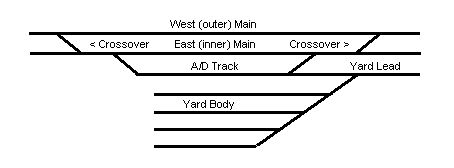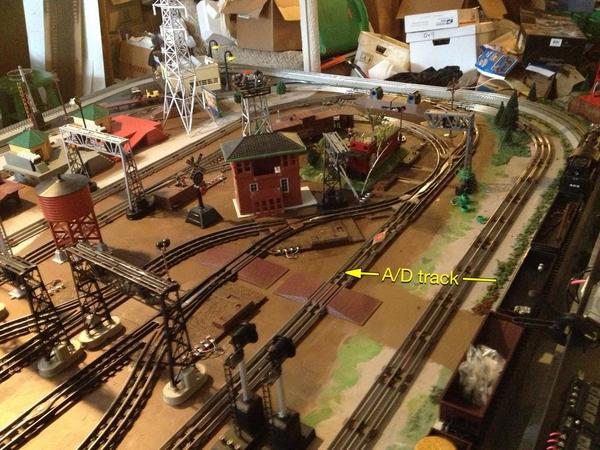Hi,
Initializing my classification yard configuration and just ran into a stumbling block / need your input:
I watched a Youtube video last night (1950s model train club) that shows a yard in detailed operation. The yard lead is along side a yard track. In the video, the switcher goes up the ladder, grabs cars and backs up, pulling the cars down the ladder and then pushes the cars forward onto the yard lead. It then uncouples, backs up past the ladder, and then goes forward back up ladder to grab more cars. In terms of operation, this made perfect sense. But tyhis is contrary to Andy Sperandeo's book and a bunch of other stuff on yards, and advice from several long-timers. They all have the yard lead trailing off behind the yard ladder. The yard lead, however, is a dead-end track that allows exit only on the ladder side that leads to the yard tracks. So, if the switcher goes up the ladder and grabs cars to pull them backward down ladder and onto yard lead, the switcher ends up at the end of the dead-end yard lead, behind the cars its pulling. Probably a stupid question, but if I build my yard as all these sources say to build it, how do I operate it so the switcher doesn't end up trapped on the dead end side of the yard lead? How does the switcher get out to go grab more cars?
Thanks,
Peter














